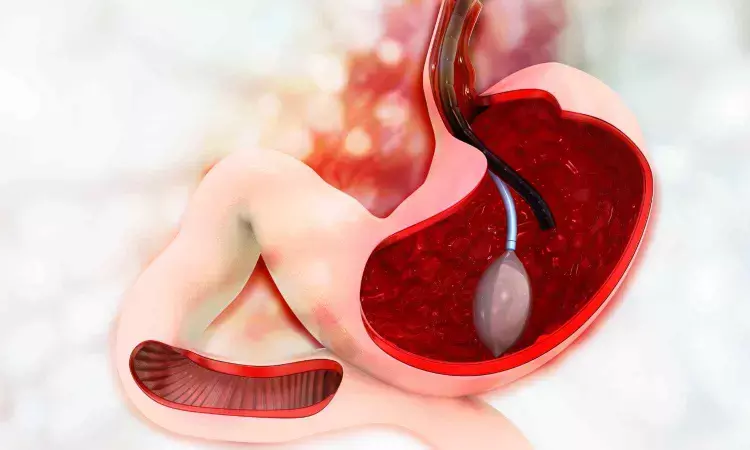- Home
- Medical news & Guidelines
- Anesthesiology
- Cardiology and CTVS
- Critical Care
- Dentistry
- Dermatology
- Diabetes and Endocrinology
- ENT
- Gastroenterology
- Medicine
- Nephrology
- Neurology
- Obstretics-Gynaecology
- Oncology
- Ophthalmology
- Orthopaedics
- Pediatrics-Neonatology
- Psychiatry
- Pulmonology
- Radiology
- Surgery
- Urology
- Laboratory Medicine
- Diet
- Nursing
- Paramedical
- Physiotherapy
- Health news
- Fact Check
- Bone Health Fact Check
- Brain Health Fact Check
- Cancer Related Fact Check
- Child Care Fact Check
- Dental and oral health fact check
- Diabetes and metabolic health fact check
- Diet and Nutrition Fact Check
- Eye and ENT Care Fact Check
- Fitness fact check
- Gut health fact check
- Heart health fact check
- Kidney health fact check
- Medical education fact check
- Men's health fact check
- Respiratory fact check
- Skin and hair care fact check
- Vaccine and Immunization fact check
- Women's health fact check
- AYUSH
- State News
- Andaman and Nicobar Islands
- Andhra Pradesh
- Arunachal Pradesh
- Assam
- Bihar
- Chandigarh
- Chattisgarh
- Dadra and Nagar Haveli
- Daman and Diu
- Delhi
- Goa
- Gujarat
- Haryana
- Himachal Pradesh
- Jammu & Kashmir
- Jharkhand
- Karnataka
- Kerala
- Ladakh
- Lakshadweep
- Madhya Pradesh
- Maharashtra
- Manipur
- Meghalaya
- Mizoram
- Nagaland
- Odisha
- Puducherry
- Punjab
- Rajasthan
- Sikkim
- Tamil Nadu
- Telangana
- Tripura
- Uttar Pradesh
- Uttrakhand
- West Bengal
- Medical Education
- Industry
Balloon Dilation Safe and Effective for Bile Duct Stones, finds Study

Researchers have found in a new study that percutaneous papillary balloon dilation is safe and highly effective for the treatment of common bile duct stones (CBDS) and is a useful alternative in patients who are unable to undergo endoscopy or surgery. The study was published in BMC Gastroenterology journal by Yiran S. and colleagues. Common bile duct stones are a common cause of obstructive jaundice and may cause severe complications like jaundice, cholangitis, and pancreatitis if left untreated.
Endoscopic retrograde cholangiopancreatography (ERCP) and surgical exploration are the standard treatments; however, the procedure might not be an option for all patients, especially patients with anomalous anatomy of the gut, advanced age, or intolerance to surgery. Percutaneous papillary balloon dilation (PPBD) has been studied as a possible alternative, employing percutaneous entry to mechanically dilate the papilla and allow for stone extraction.
A systematic review and meta-analysis were performed in line with strict methodological principles. PubMed, EMBASE, and the Cochrane Library were searched for articles between January 1, 2000, and May 1, 2024. The eligible studies had to evaluate the results of percutaneous papillary balloon dilation in patients with CBDS both with normal and distorted gastrointestinal anatomy. The main results were overall and single-session clearance rates of bile duct stones and complication rates related to procedures. Statistical analyses were undertaken using a random-effects model with Stata software, where I² statistics were used to test for heterogeneity and funnel plots to identify publication bias. 2553 studies were screened initially, from which 25 studies qualified for inclusion, including 3402 patients who underwent PPBD.
Results
• Pooled analysis illustrated the extremely high rate of overall bile duct stone clearance at 97.0% (95% CI: 95.3–98.5), affirming the high efficacy of PPBD in ensuring complete ductal clearance.
• Single-session clearance of stones, a major determinant of procedural effectiveness, also remained favorable at 82.7% (95% CI: 76.7–88.1).
• Regarding safety, the rate of all complications combined was 11.6% (95% CI: 7.3–16.6), which suggests an acceptable risk profile for the procedure relative to more invasive alternatives.
• Subgroup analysis determined that the clearance rate in patients with abnormal gastrointestinal anatomy was still outstanding at 97.2% (95% CI: 88.4–100.0), validating its application in complicated anatomical situations.
• For larger stones greater than 15 mm in diameter, PPBD had a high success rate of 94.4% (95% CI: 86.2–99.4), proving to be effective even in technically difficult cases.
This meta-analysis demonstrates strong evidence that percutaneous papillary balloon dilation is safe and very effective in the treatment of common bile duct stones, with a 97% overall clearance rate and minimal complication profile. As a minimally invasive and effective procedure, PPBD potentially holds value as a therapeutic option when endoscopy or surgery is not indicated, justifying its use in multidisciplinary biliary treatment plans.
Reference:
Sun, Y., Wang, W., Li, Y. et al. Efficacy and safety of percutaneous papillary balloon dilation for common bile duct stones: a systematic review and meta-analysis. BMC Gastroenterol 25, 726 (2025). https://doi.org/10.1186/s12876-025-04238-7
Dr Riya Dave has completed dentistry from Gujarat University in 2022. She is a dentist and accomplished medical and scientific writer known for her commitment to bridging the gap between clinical expertise and accessible healthcare information. She has been actively involved in writing blogs related to health and wellness.
Dr Kamal Kant Kohli-MBBS, DTCD- a chest specialist with more than 30 years of practice and a flair for writing clinical articles, Dr Kamal Kant Kohli joined Medical Dialogues as a Chief Editor of Medical News. Besides writing articles, as an editor, he proofreads and verifies all the medical content published on Medical Dialogues including those coming from journals, studies,medical conferences,guidelines etc. Email: drkohli@medicaldialogues.in. Contact no. 011-43720751


